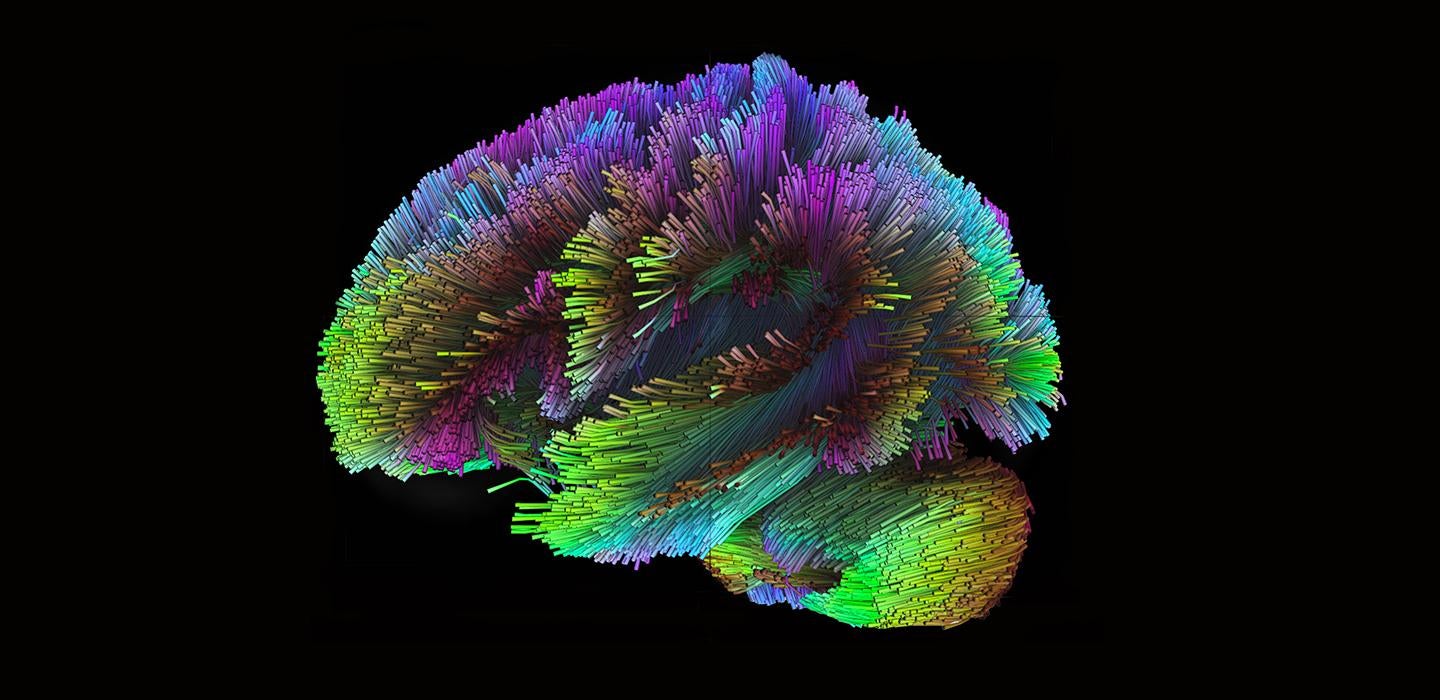
Subscribe to Pittwire Today
Get the most interesting and important stories from the University of Pittsburgh.Close to two in five children are exposed to very stressful experiences like neglect or abuse — and new research shows that those early experiences can change parts of a brain circuit that’s important to learning. The findings could in turn point to new approaches to help those who go on to experience depression or other mental health challenges after stress.
Studying how people learn is a new tack for lead author Jamie Hanson, an assistant professor of psychology in the Kenneth P. Dietrich School of Arts and Sciences. Hanson has spent his career examining the effects of childhood stress, especially on areas of the brain that help people detect and process threats. But he always suspected that might be missing part of the true impact of very stressful experiences.
“Many times, individuals who’ve had really high levels of stress early in development report more challenges with depression, reward and not feeling pleasure,” he said. “It’s clear that the brain is being impacted in a lot of different ways. And studying that threat circuit may only be getting part of the story.”
With help from then-undergraduate Bryan Kennedy (A&S ’19), Hanson turned his attention to a little-studied part of the brain, the corticostriatal circuit, which is a collection of brain areas that’s important to how people learn and respond to rewards and punishments.
Applying new brain imaging techniques to data from more than 70 teenagers, Kennedy, Hanson and colleagues found that white matter in this circuit tended to look different in those who had experienced stress early in life. White matter connects different parts of the brain and works best when it’s aligned in a single direction — but in teens exposed to high stress, the team saw it was less well-aligned. Where the fiber bundles would normally assume an elongated football-like shape, in those participants the bundles looked more like a volleyball.
Then the researchers showed from experiments in the lab that teens with those more volleyball-shaped brain fibers tended to be more sensitive to negative feedback, overcorrecting when their decisions were shown to be the wrong ones. The team published their results in the journal Neuropsychopharmacology on Sept. 24.
In explaining the results, Hanson pointed to the variety of factors linked to childhood stress. “I sometimes think about stressful environments as being unpredictable or volatile environments,” Hanson said. “Caregivers might be pretty stressed out, they may be moving between different housing and places they live, parents may be working different schedules or may have financial or personal challenges.”
That instability — often driven by economic challenges — may make it hard for a child to learn from patterns in their environment, translating into “wires” of neurons in their brain that form in less consistent directions.
It’s a difference that has important implications for children’s lives: The tendency to overreact to negative experiences could explain an elevated risk of depression in people who had challenging childhoods.
“Depression may come from vigilance and worrying about things in your environment and feeling threatened by them, but it could also come from feeling less rewarded by certain stimuli, not feeling as much pleasure in your daily life,” said Hanson.
Unpacking these different ways brain circuits respond to stress, Hanson said, is a potential first step toward precision psychiatry based on each individual person’s brain. It could also lead to interventions for children undergoing stressful experiences, but Hanson stressed that there’s more to be done first: For instance, a tendency to overcorrect for negative experiences may even work to someone’s advantage in some situations.
“There may be ways that we are adaptively engaging in one context where we have to change and switch in another context,” Hanson said. Any application to interventions and therapies will have to be based upon this more nuanced picture of how people learn.
Even before this study, Hanson harbored an interest in studying circuits of the brain that involved rewards and learning. But the lab’s recent pivot ultimately came from an unexpected place: a Pitt undergraduate seminar.
Kennedy, then a third-year neuroscience student at Pitt, had recently picked up a dual major in psychology. “I felt too far away from the people, the reason why I feel motivated about this sort of work,” he said. He wanted to pursue a kind of science that put people front and center.
That drive led him to Hanson’s lab — and to this project when he took an undergraduate seminar with Professor of Psychology Walt Schneider, where he learned about a new imaging technique that traces the outlines of fibers that connect different brain regions by tracking the movement of water in the brain.
Kennedy’s work in the class became his undergraduate honors thesis and now his first co-lead-author paper. Inspired by his collaboration with Hanson, Kennedy is applying to clinical psychology programs for the fall.
“I’ve always worked with kids, and I’ve always been passionate about mental health,” Kennedy said. “This is truly what I want to spend my life studying, so this one meant a lot.”
— Patrick Monahan


